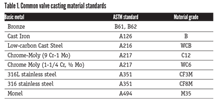NAM Monday Economic Report – October 27, 2014
What a difference a week makes.
A fair share of the concern lately has stemmed from slowing growth in China and worries that Europe might slip back into a recession. Last week, there was better news for these regions, most notably in Europe. The Markit Flash Eurozone Manufacturing Purchasing Managers’ Index (PMI) increased from 50.3 in September to 50.7 in October, a better-than-expected figure on higher output and employment. This was good news, as September’s figure had been the lowest level since July 2013, when Europe first emerged from its recession. Still, the Eurozone’s challenges remain far from over, with new orders contracting for the second straight month and exports easing. In addition, while Germany improved somewhat for the month, French manufacturers (down 48.4 to 47.6) continue to report weaknesses.
At the same time, Chinese manufacturing activity rose to its highest level in three months, up from 50.2 to 50.4. It was the fifth consecutive monthly expansion in manufacturing activity in China, with demand and production growing, albeit slower than we might prefer. In general, we continue to see Chinese growth decelerating. For instance, real GDP slowed from 7.5 percent year-over-year growth in the second quarter to 7.3 percent in the third quarter. The paces of fixed real investment and retail sales have also eased considerably so far this year. On the positive side, industrial production picked up a little in September, even as its trend line also reflects sharply lower growth rates.
Meanwhile, in the United States, the Markit Flash Manufacturing PMI dropped slightly, down from 57.5 to 56.2. Yet, new orders, output and hiring continue to grow at decent rates, with each measure reflecting progress from earlier in the year. The Kansas City Federal Reserve Bank also reported expanding activity levels, albeit at a slower pace, in October. Exports were a concern in both releases, but given the softness in international markets, this should not be a surprise.
Other economic indicators released last week mostly focused on prices and housing. Consumer prices rose 0.1 percent in September, but the annual pace of inflation remained largely in check at 1.7 percent. This will be relevant this week with the Federal Open Market Committee meeting, particularly as it debates when to raise short-term rates. Lower energy costs have been helpful in this regard, with the average price per gallon of regular gasoline falling to $3.070 last week. The Federal Reserve is expected to end its quantitative easing initiative. Regarding the housing market, both existing and new home sales were higher in September, reflecting progress from just six months ago. We hope this suggests that the market is moving in the right direction.
This week, the highlight will be the release of third-quarter real GDP data, which come out on Thursday. I estimate that the U.S. economy grew by 3.25 percent in the third quarter—a relatively healthy pace after the sluggish first-half performance. Beyond this measure, other items to watch include surveys from the Dallas and Richmond Federal Reserve Banks and the latest data on consumer confidence, durable goods orders, employer costs and personal income and spending.
Chad Moutray is the chief economist, National Association of Manufacturers.
RELATED CONTENT
-
Editor's Product Picks
Neles introduces valve-sizing and selection software for all intelligent automated process valves.
-
Which Gate Valve is Best for Today's Waterworks Systems?
A historical perspective may provide the answer.
-
Recycling Foreign Metals: Buyer Beware
The North American steel-making industry, with its historic record of quality control, is no longer the world’s top producer.








 Unloading large gate valve.jpg;maxWidth=214)

